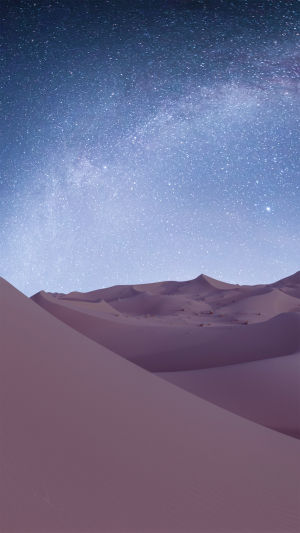The desert is an excellent place for stargazing due to its numerous advantages. In this article, we will explore these favorable conditions and highlight some of the best deserts for stargazing.
The temperature difference between day and night in the desert is significant, and air convection is frequent. Under the influence of wind, the air is highly purified, which leads to a generally clear and cloudless sky. Moreover, the air is relatively pure in the desert, making it ideal for stargazing.
Deserts typically have fewer urban or industrial areas, resulting in no light pollution. Light pollution refers to intense light sources from urban and industrial areas that interfere with stargazing. In the desert, without these sources of interference, more stars and brighter stars can be observed.
Deserts are often at higher elevations than surrounding areas, which is vital for stargazing. At lower altitudes, there is greater atmospheric pressure, which makes the air denser. At higher altitudes, the atmospheric pressure is less, and the air is thinner, which reduces light refraction and improves transparency.
Some of the best deserts for stargazing are:
Sahara Desert: This desert is one of the largest in the world and a great place for stargazing. At night, the starry sky is very beautiful, and the observation conditions are excellent.
There are no obstacles, and your line of sight seems to be able to see the entire Milky Way. The stars are faintly flickering in the sky, making the Sahara Desert the best place to observe the starry sky.
Atacama Desert: The night sky over most of the Atacama Desert is spotless. It is the driest desert in the world, located primarily in Chile, with small parts belonging to Peru, Bolivia, and Argentina. One of the great strengths of the Atacama Desert is the high number of dry, sunny days each year.
Antarctica's ice desert: Antarctica is one of the most remote and inaccessible places on Earth, but it's also one of the best places in the world for stargazing. The skies in Antarctica are very clear and bright due to the extremely cold temperatures and dry air.
Stargazing in the desert is an exciting and fun activity, but there are a few things to keep in mind to ensure safety and the best observing experience. Here are some dos and don'ts for desert stargazing:
1. Be safe: The desert is barren, and there are dangers lurking at night. It is easier to get lost in the desert at night, so remember where your car is parked and find your way back. Bring enough water and fully charge your mobile phone to avoid helplessness.
2. Wear appropriate clothing and footwear: Temperatures in the desert can often drop at night, so warm clothing is required. Also, the desert terrain is uneven, so wearing comfortable shoes will protect your feet.
3. Bring enough water and food: The climate in desert areas is often very dry, and you need plenty of water to keep your body hydrated. Packing easy-to-carry meals can help you overcome fatigue and low blood sugar.
4. Bring the proper gear: Observing the sky requires some specific equipment, such as a telescope and a star map. Ensure that you have enough batteries and other necessary items to keep the device running.
The desert is an excellent place for stargazing due to its clear skies, high elevations, and lack of light pollution. However, it is important to be safe and prepared before embarking on a desert stargazing adventure. Remember to dress appropriately, bring enough water and food, and pack the proper gear to ensure the best observing experience.





